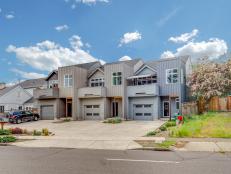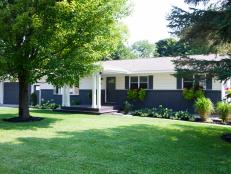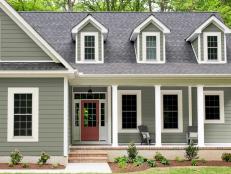7 Tips to Fix Up a Foreclosure (Without Breaking Your Budget)

With the economy still reeling, home foreclosures are at an all-time high. A foreclosure is a terrible thing for most people, but a savvy investor can turn an unfortunate situation into a tidy profit. Often a foreclosure home is in need of TLC — after all, if the owners couldn’t make their mortgage payments, they likely weren’t keeping the property in the best condition either.
Your Goal:
Make potential buyers feel comfortable by updating the house in line with the rest of the neighborhood. But be careful not to spend too much, or you’ll leave your profit in the house. A good rule of thumb is to invest in improvements that will add at least twice their cost to the home’s value. Here are seven ways to get the most return for your money.
Look for Red Flags
Before signing on the dotted line, hire a home inspector to give the place a thorough evaluation. An inspection may cost $200-$300, but is well worth the price if the inspector uncovers a major structural issue or another pricey problem. Tip: If the problem sounds like a money pit, it probably is.
Spy on the Neighbors
Scope out the neighborhood before starting any work. You never want to upgrade far beyond neighborhood standards. For example, if most homes have window air units, you won’t recoup the cost of central air conditioning. Conversely, if granite countertops are a staple, you’ll lose money by installing laminate. Tip: Attend a few real estate open houses in the area to examine the homes’ interiors.
Give the Most Important Rooms Some TLC
Kitchen and bathroom remodels are still high on the must-have list, according to Remodeling Magazine’s 2009 Cost vs. Value Report, because they’re the rooms buyers look at first and use the most. What upgrades you make and how much you spend will depend on the market and your budget, but make it your mission to create bright, clean, family-friendly rooms. Tip: Throw out an old refrigerator, which looks worse than no fridge at all.
Upgrade the Underbelly
Buyers expect the home’s mechanical and electrical systems to be in good shape, and replacing outdated systems can add value to the home. The heating and air conditioning unit, water heater, wiring and plumbing should all be in good condition. If they aren’t, the buyer’s home inspection service will find the problem. Tip: Hire a licensed electrician to do electrical work, since improperly done work can lead to a fire and/or legal hassles.
Paint + Flooring = Dramatic Makeover
Real estate experts always advise giving walls and trim a fresh coat of paint (an attractive neutral color is most salable), but don’t forget what’s underfoot. Old hardwood flooring hidden under outdated carpet and laminate is usually worth refinishing; if you’re replacing flooring, opt for wall-to-wall beige carpeting, hardwood laminate or solid hardwood, depending on the neighborhood and your budget. Tip: A light gray coat of paint in an unfinished basement makes the area look clean, bright -- and more valuable.
It's the Little Things
Big-ticket items like new windows generally don’t pay off when flipping a foreclosure home, but don’t underestimate the effect of inexpensive cosmetic improvements like new doorknobs, switch plates, toilet seats, ceiling fans, faucets and cabinet pulls. Tip: Make sure all your projects are 100 percent finished when the For Sale sign goes up. According to Charles McMillan , president of the National Association of Realtors, a purchaser will subconsciously subtract almost double the cost of an undone project when they make an offer.
Add Curb Appeal
Make, don’t break, the deal with a clean, mowed front yard and a colorful planter and welcome mat. If the home’s landscaping is overgrown and neglected, trim out the excess or plant a few inexpensive foundation bushes near the front. Tip: Mulch flowerbeds with a dark-colored mulch to add instant charm.

.-Battle-on-the-Beach-courtesy-of-HGTV.-.jpg.rend.hgtvcom.196.196.suffix/1714761529029.jpeg)












































